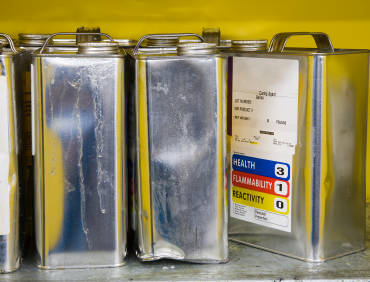
Gastroesophageal Reflux Disease (GERD) is a digestive disease that occurs in approximately 10 to 20% of the population. “Reflux” means to flow back or return and refers to the flowing-back of the highly acidic stomach (gastric) contents into the esophagus. A common symptom of this disease is heartburn. It is sometimes an issue in court, if the stomach contained alcohol from the consumption of an alcoholic beverage, could a reflux from the stomach affect the breath alcohol results? There have been a number of published studies about GERD and breath tests, but a recent study addresses this issue in 10 subjects with GERD using a high dose of alcohol;
Booker, J.L., and Renfroe, K., “The Effects of Gastroesophageal Reflux Diseas on Forensic Breath Alcohol Testing”, Journal of Forensic Sciences, 60(6): 1516-1522, 2015
Fifteen subjects, of which 10 were diagnosed with GERD, (5 male, 5 female ages 27 to 50 years) consumed a large dose of alcohol (1.7 g/kg for males and 1.5 g/kg for females) within 30 minutes. The alcohol was consumed after a standard meal of rice, beans, corn chips and spiced salsa. The subjects were tested under identical dosing conditions at least 3 weeks later to determine the reproducibility of the results.
Blood samples were collected via a catheter every 20 minutes and BACs were measured by headspace GC. Breath tests were conducted at the same time as blood sampling in duplicate, using an Intoxilyzer model 5000. The rates of alcohol elimination ranged between 0.0103 and 0.0197 g/100mL/h which is consistent with previous studies. The mean rates of elimination were 0.0147 and 0.0159 g/100mL/h for the GERD and non-GERD subjects respectively.
The following graph shows the BAC and BrAC curves of 6 GERD subjects (G-1 to G-6). The bottom curve shows when the BrAC is greater than the BAC, which in this experiment only occurred in GERD subjects shortly after drinking ceased, when there was a high alcohol concentration in the stomach.

Only 3 of the 10 GERD subjects produced elevated BrAC results that could be attributed to GERD and only 1 subject produced elevated BrACs on both drinking occasions. The authors conclude that GERD is not a factor to be considered when the subject is post-absorptive and only occurs when alcohol is present in the stomach at a very high concentration.
They also conclude:
GERD-related alcohol leakage from the stomach into a breath sample is therefore an essentially irrelevant source of potential error in forensic breath testing.
For other studies on GERD and the mouth alcohol effect check out my book – “Wigmore on Alcohol, Courtroom Alcohol Toxicology for the Medicolegal Professional”, Chapter 3.05 Mouth Alcohol, Irwin Law, 2011





